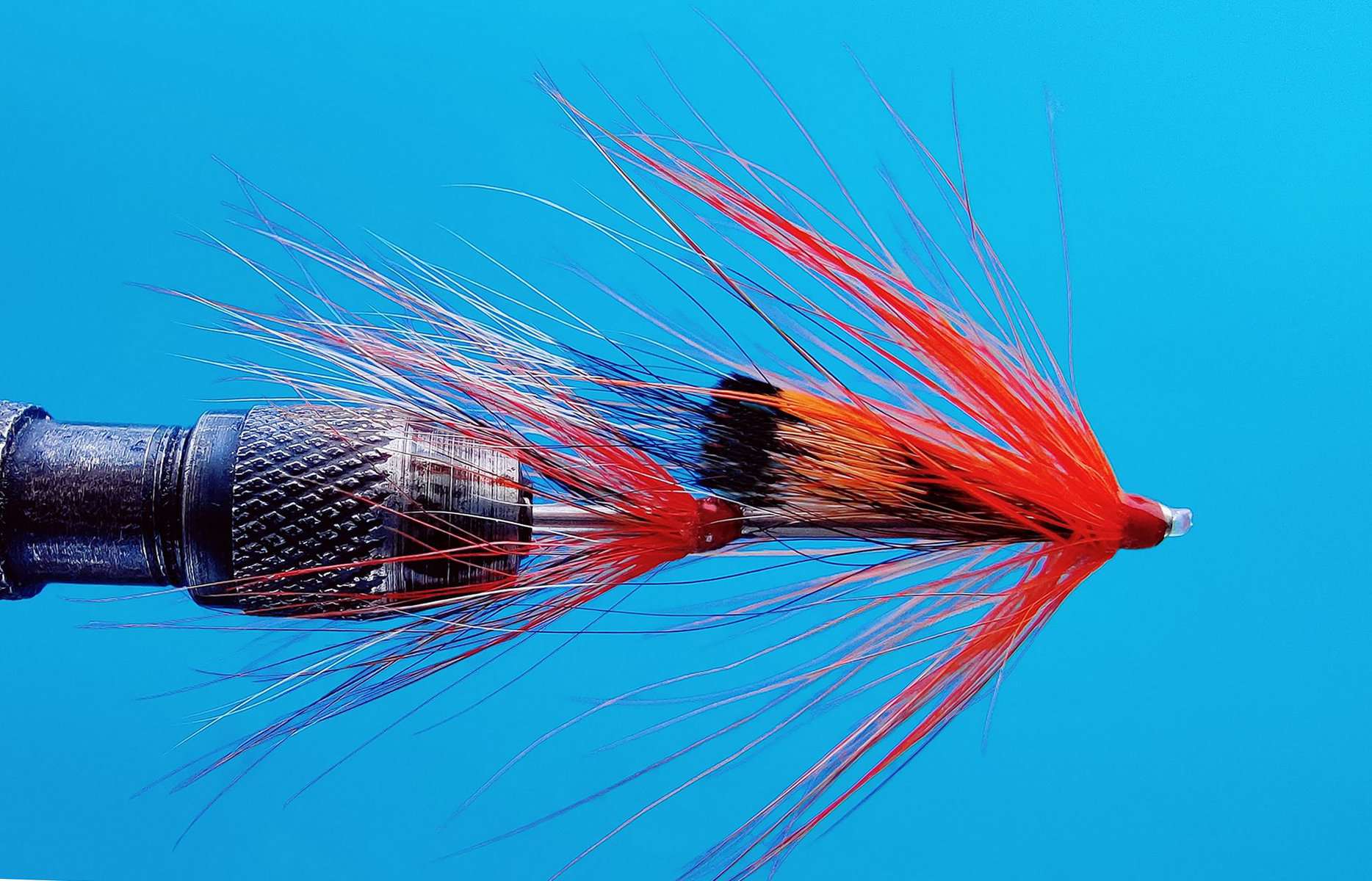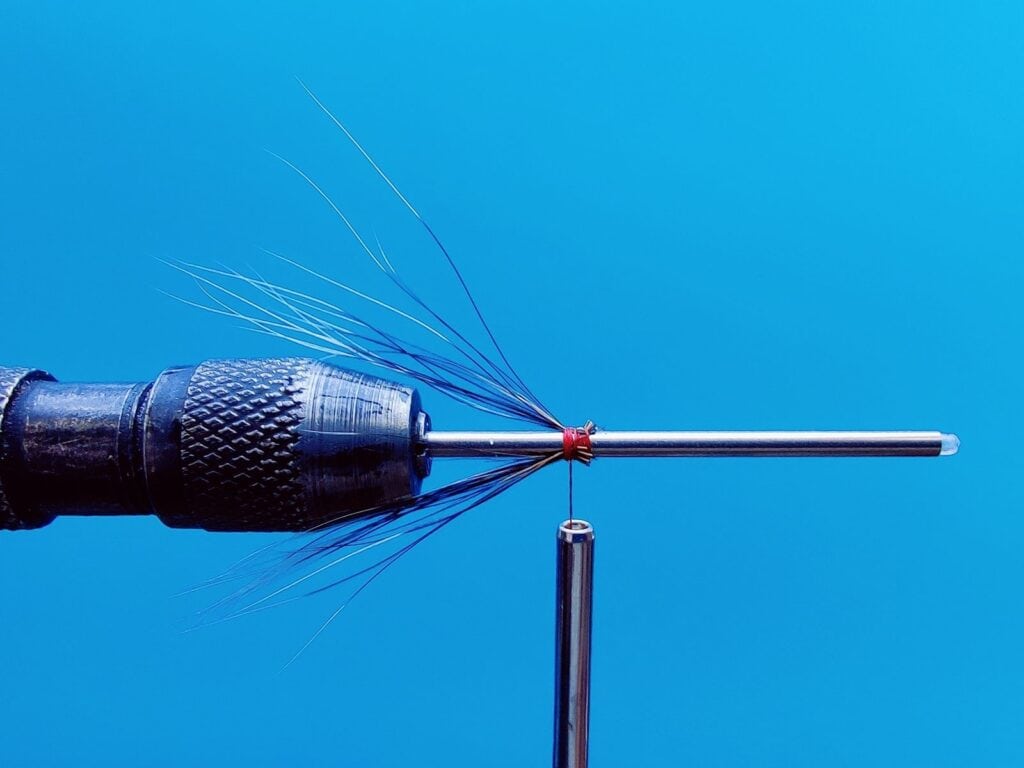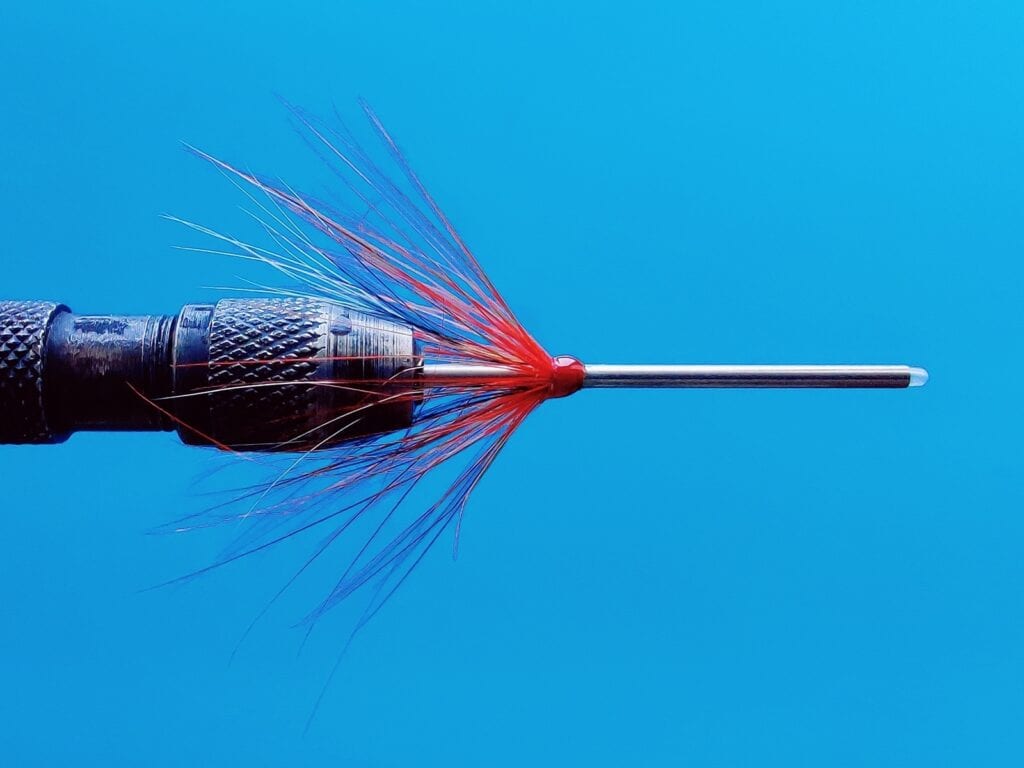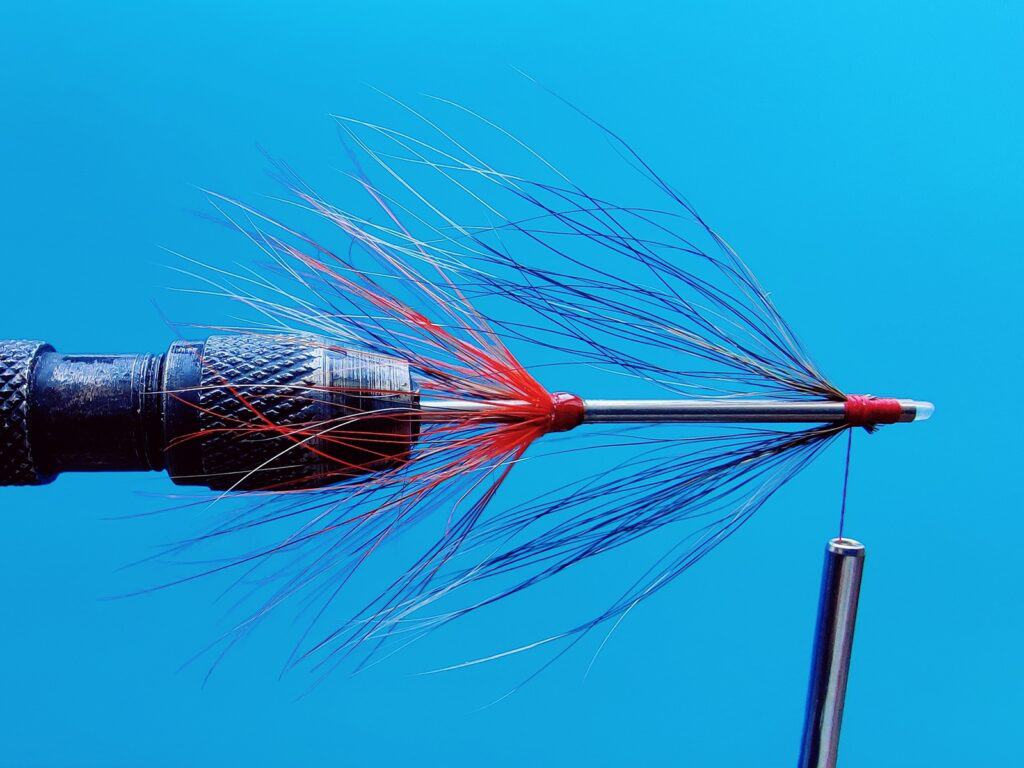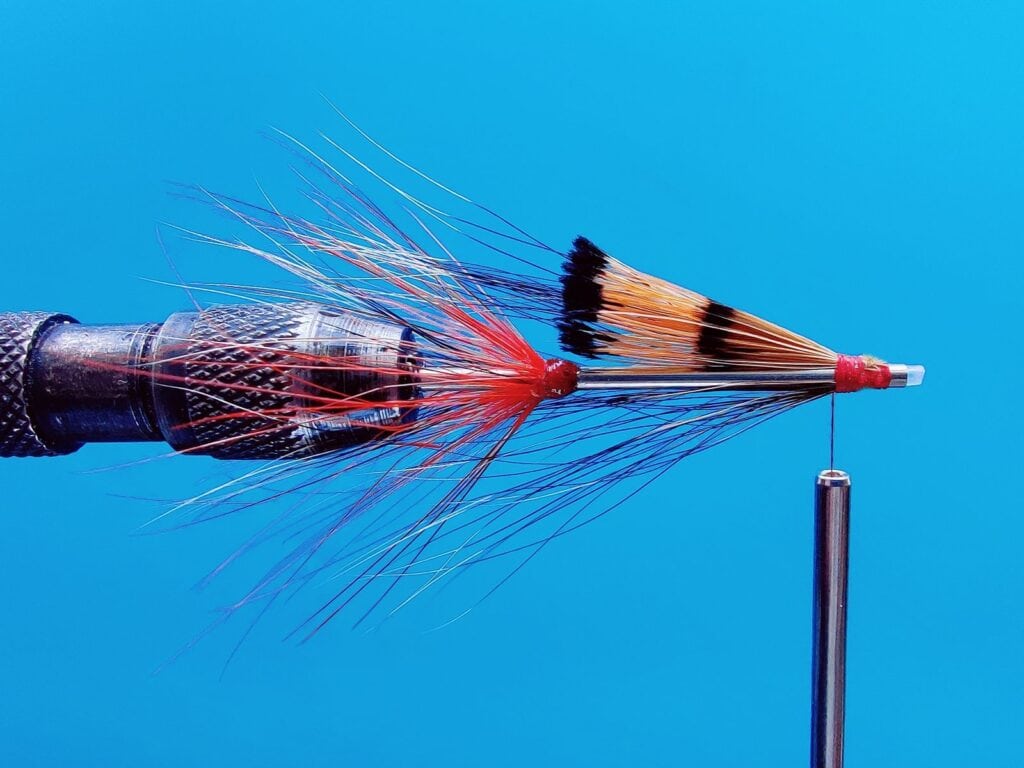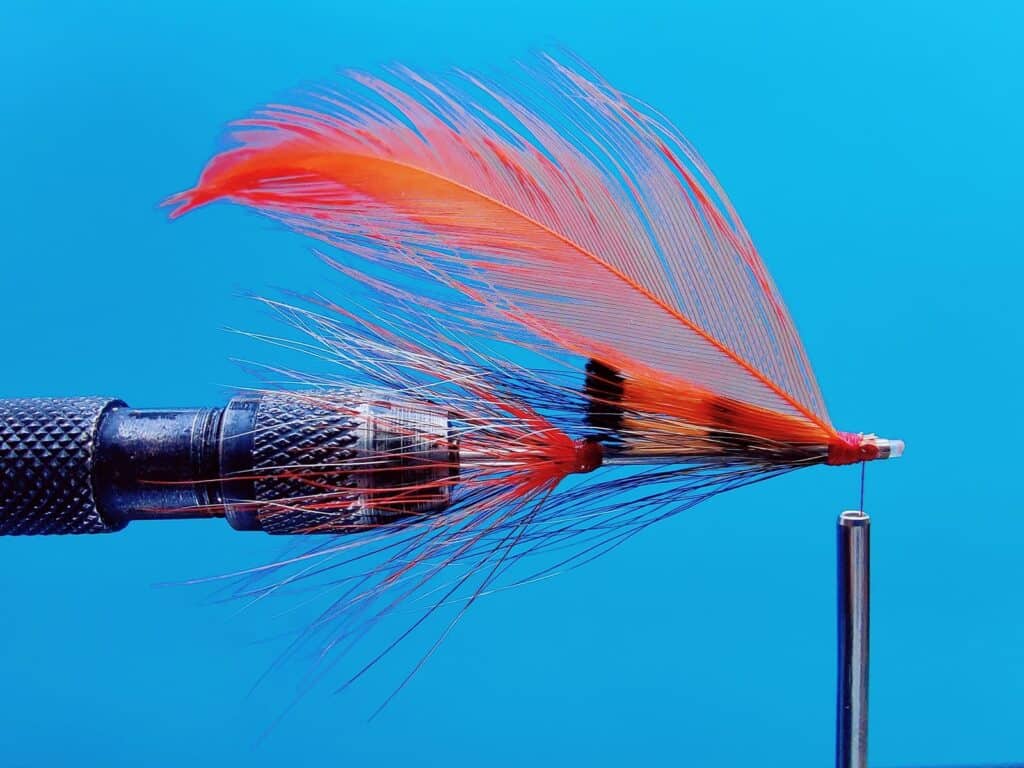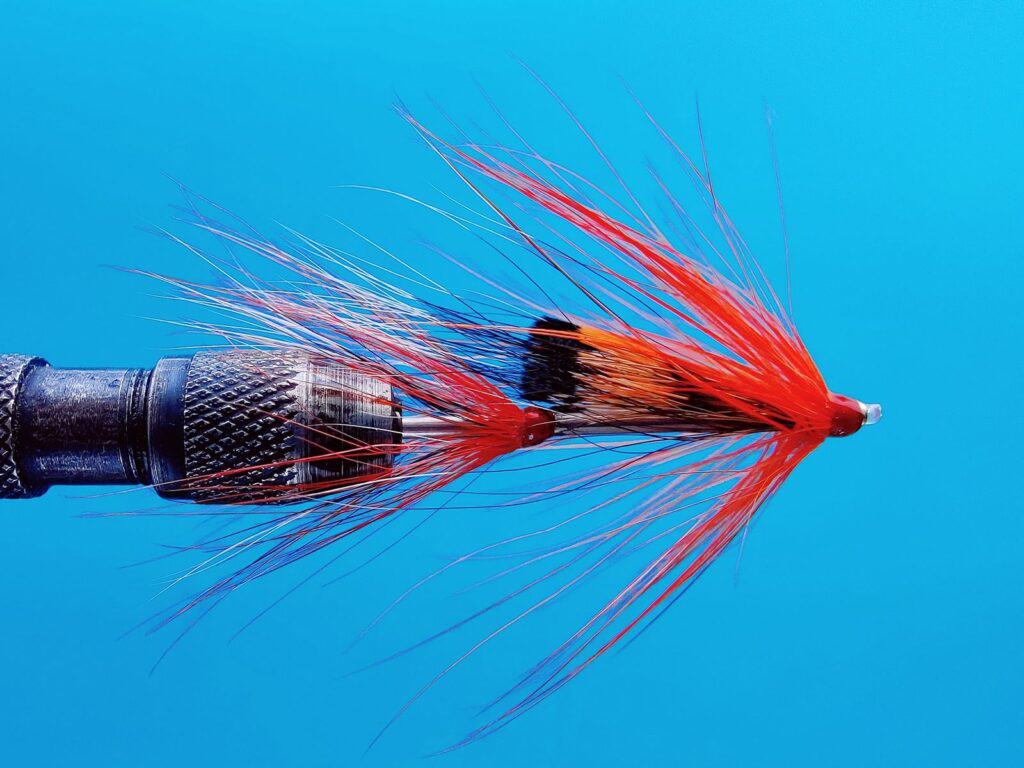How to tie an Ally’s Shrimp Intruder on a Tube
The Intruder style of fly might be successfully adapted to a wide variety of fish species and fishing situations. I have been experimenting myself with the Intruder style of fly dressed on tubes, for example for salmon and sea trout. One famous and very successful Scottish salmon fly of recent decades is Ally’s Shrimp, which I have tried here to adapt as a tube fly dressed very simply in the Intruder style. I have applied a very simple dressing to a 35mm long stainless steel Needle Tube, 1.5mm in diameter. The materials used in the dressing are those commonly used in the dressing of Scottish salmon flies. i.e. squirrel tail, golden pheasant tippet feathers, cock hackles, bucktail (optional in this dressing) – the very materials used, in fact, in Ally Gowans’s original salmon fly. The only thing missing is a body dressing, as I have left the shiny stainless body of the tube undressed, to create a kind of Silver Ally’s Shrimp tube fly variant! For a more authentic North American flavour in this and other similar tube flies, more exotic fur and feathers, in a variety of colours, might be applied in the dressing, e.g. Marabou, Rhea, Ostrich herl, Lady Amherst pheasant feathers and Arctic fox fur, along with a wide variety of flashy artificial components, to create a more “traditional” looking Intruder fly.
Illustrated below is a step-by-step tying sequence for the dressing of a simple Ally’s Shrimp Intruder Fly variant tied on a stainless steel Needle Tube.
Materials for tying an Ally’s Shrimp Intruder Tube Fly
- A tube of suitable length. I have used here a stainless stell needle tube, 35mm long and diameter 1.5mm
- Natural squirrel tail hair
- Orange cock hackles
- Golden pheasant tippet feather
Step 1
Tie in a two sparse bunches of squirrel tail top and botton of the tube about two thirds of the way down the tube
Step 2
Tie in two or three turns of orange cock hackle, form a neat head, varnish and allow to dry
Step 3
Move to the head of the fly and tie in another two sparse bunches of squirrel tail
Step 4
Tie in a trimmed golden pheasant tippet feather. I have left the centre fibres on the feather stem, removing the outer fibres
Step 5
Tie in a second orange cock hackle
Step 6
Wind three or four turns, form a neat head and varnish
The finished fly is about two inches long. It might be used for Atlantic salmon here in Europe, or perhaps for Pacific salmon and steelhead in the warmer months of the North American season. A similar tying sequence may be followed using varied materials in a range of colours to create a whole series of Intruder tube flies, adapting traditional patterns as here, or creating entirely new patterns to suit the tyer’s needs, preferences and fancies.
One of the major benefits of dressing an Intruder Fly on a tube is the ease of fitting and changing the hook. Intruders are most commonly fitted with single hooks, adding minimum weight to the rear end of the fly. The hook may be secured as on a conventional tube fly by inserting it into a short length of silicone or PVC tubing, which holds the hook in line with the tube, while allowing flexibility and minimum leverage while a hooked fish is in play.
An alternative is to allow the hook to swing freely. To prevent wear on the hook knot and to help align the hook with the tube, I have protected the knot by fitting a knot guard made from heat-shrink tubing, as shown below. The hook will tend to swim with hook point uppermost when fishing, as would any undressed single or double hook if drawn through a current of water attached to a line.
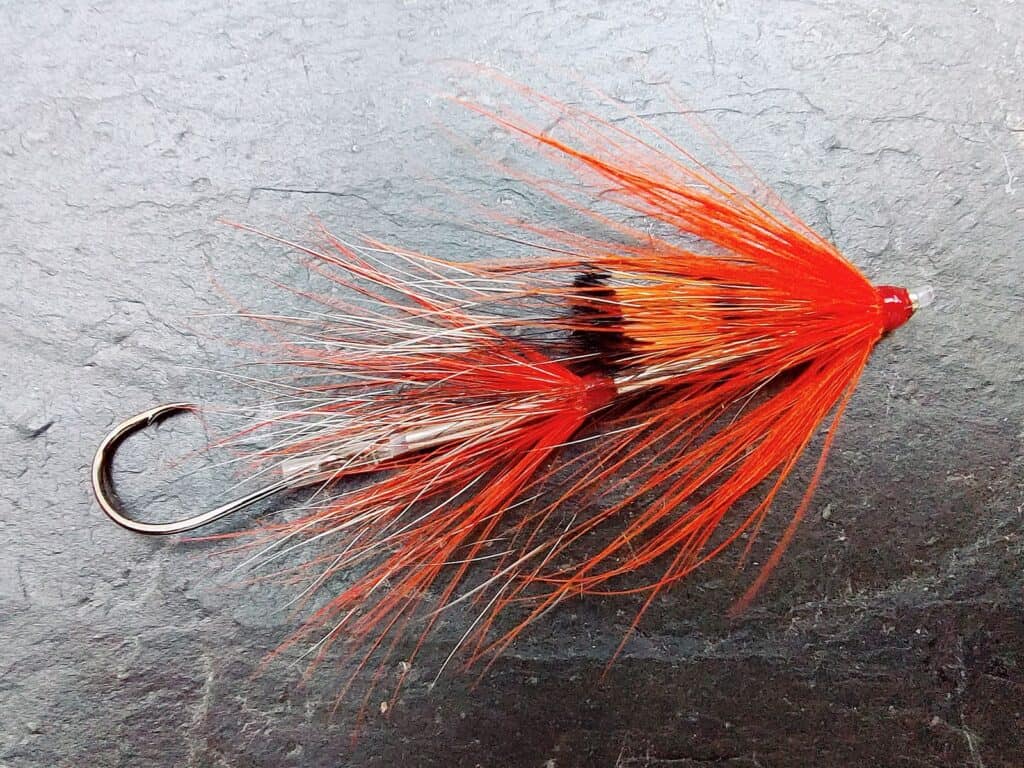
The variant below has the addition of a sparse wing of bucktail and a few strands of Krystal Flash.
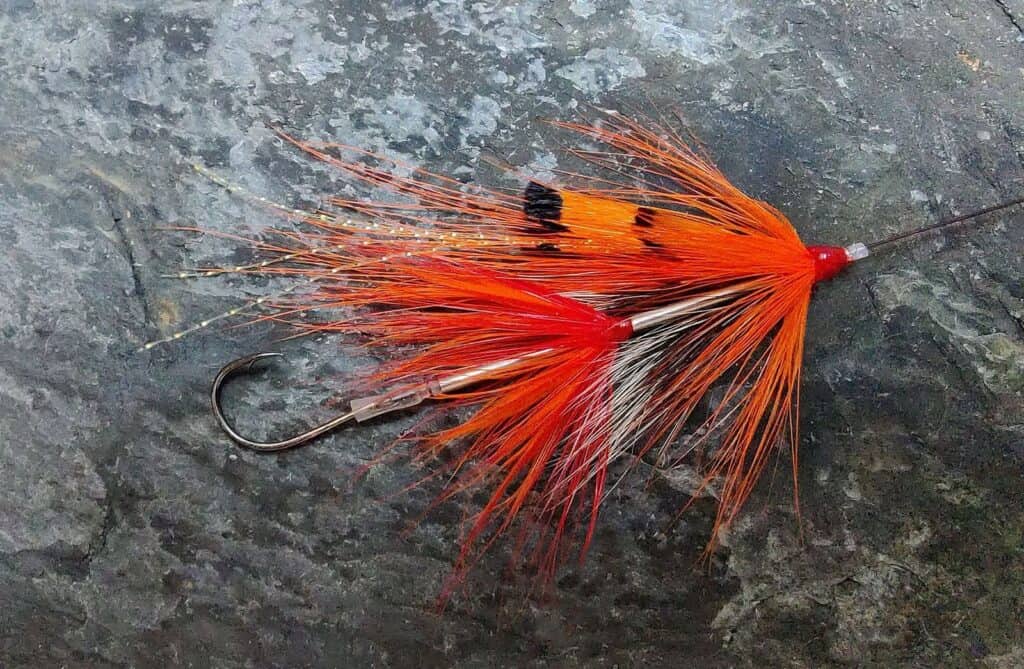
A Wee Intruder Tube
The above dressing might be further simplified by dressing the Ally’s Shrimp on a shorter tube, a 25mm (one inch) needle tube in the fly below, and omitting the tail dressing, creating a simplified Ally’s Shrimp Intruder Fly of about two inches in length.
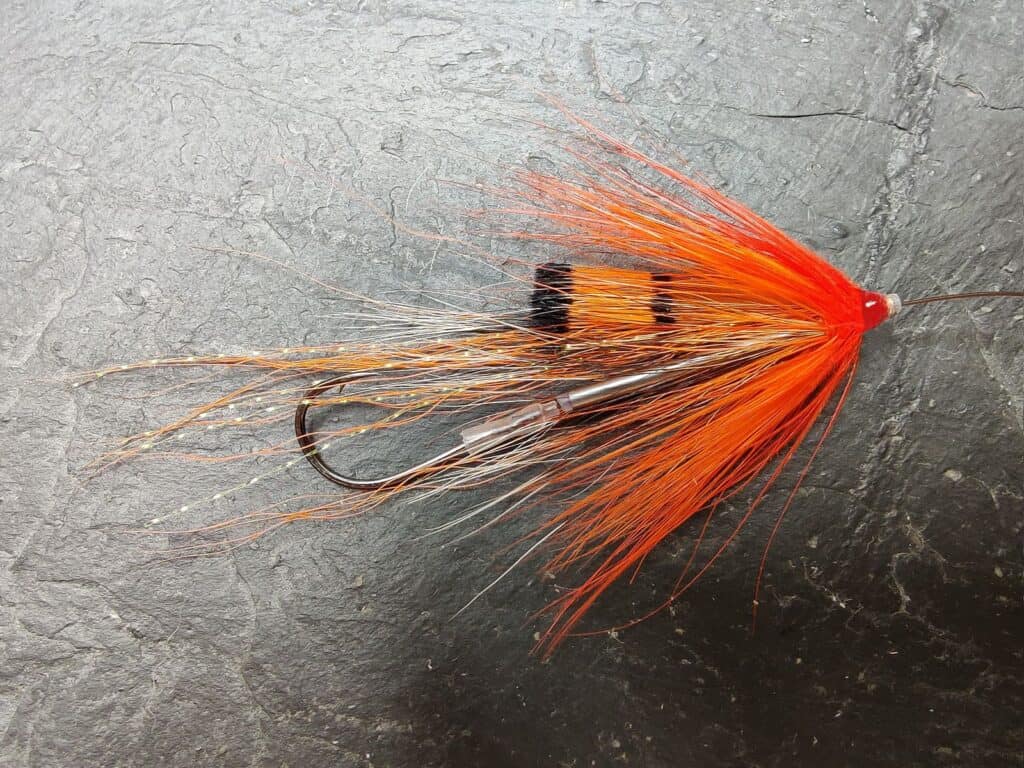
See more Scottish Intruder Tube Flies
